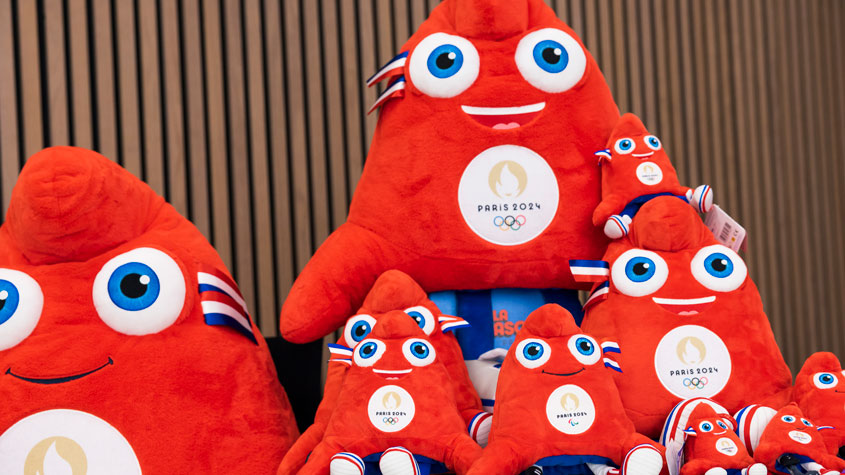Sports and Intellectual Property

Tackling Illegal Sports Streams
- Patents protect the technology used to develop the shoe
- Designs protect the “look” of the shoe
- Trademarks distinguish the shoe from similar products and protect the “reputation” of the shoe (and the company making it)
- Copyright protects any artwork and audiovisual creations used to publicize the shoe
IP in the sports business
Sports show intellectual property (IP) in action. Patents encourage technological advances that result in better sporting equipment. Trademarks, brands and designs contribute to the distinct identity of events, teams and their gear. Copyright-related rights generate the revenues needed for broadcasters to invest in the costly undertaking of broadcasting sports events to fans worldwide. IP rights are the basis of licensing and merchandising agreements that earn revenues to support the development of the sports industry.

Sports Patents
Sports Trademarks
Designs in Sports
Copyright and Broadcasting Rights in Sports

Licensees and Sponsorships in Sports
IP and Dispute Resolution in Sports
Sports intellectual property stories

The Phryges – Paris 2024 Mascots Star as Olympic Merchandise

Innovative prostheses positively change the Paralympics

Paralympian Rory Cooper drives innovation for people with disabilities

Enda: Kenya’s first home-grown running shoe

Meet the designer of the Olympic torch for the 2020 Tokyo Olympic Games
From football to tennis to ice skating, in every sporting field, inventors and creators are working behind the scenes to push the boundaries of athletic performance, improve audience experience and bring sports events to every home.
IP rights – and the legal protection they give – are the basis for key business transactions that secure the economic value of sports and push the industry forward. Thanks to steady industry growth, sporting organizations can finance high-profile sports events and promote sports development worldwide. The sports industry also contributes to the world economy, creating jobs and developing public infrastructure.
Several IP rights may protect a sports shoe:
- Patents protect the technology used to develop the shoe
- Designs protect the “look” of the shoe
- Trademarks distinguish the shoe from similar products and protect the “reputation” of the shoe (and the company making it)
- Copyright protects any artwork and audiovisual creations used to publicize the shoe
IP in the sports business
Sports show intellectual property (IP) in action. Patents encourage technological advances that result in better sporting equipment. Trademarks, brands and designs contribute to the distinct identity of events, teams and their gear. Copyright-related rights generate the revenues needed for broadcasters to invest in the costly undertaking of broadcasting sports events to fans worldwide. IP rights are the basis of licensing and merchandising agreements that earn revenues to support the development of the sports industry.

Sports Patents
From the sports shoe to the swimsuit and the tennis racket to the football, sports technologists have applied their ingenuity, creativity and expertise to develop better and safer equipment in the quest for sporting excellence.
Sports Trademarks
Brands are critical for creating business value, and the sports business is no exception. Strong brands command customer loyalty and premium prices, constituting valuable assets that drive company revenue and growth.
Designs in Sports
The influence of design in the world of sport is far-reaching. Where image and aesthetics are involved, so too is design, and where new materials emerge, aesthetics or design soon follow.
Copyright and Broadcasting Rights in Sports
Copyright and related rights, particularly those relating to broadcasting organizations, underpin the relationship between sports and television and other media.

Licensees and Sponsorships in Sports
By acquiring IP rights and using them strategically, sports organizations and other rights owners can protect and increase their income-generating potential.
IP and Dispute Resolution in Sports
What kind of IP-related disputes are common in the sports area, and how to resolve them.
Sports intellectual property stories
Find more stories on how IP stimulates the business of sports in these WIPO Magazine articles.

Innovative prostheses positively change the Paralympics
Some 4,400 athletes with disabilities competed for gold during the Tokyo 2020 Paralympic Games. IP protected sports prostheses were one of the key devices they used to achieve their goals.

Paralympian Rory Cooper drives innovation for people with disabilities
Dr. Cooper – Paralympian, serial inventor, army veteran, engineer, marathon racer – discusses his ground-breaking work and the importance of IP in bringing it to the market.

Meet the designer of the Olympic torch for the 2020 Tokyo Olympic Games
An icon of the Olympic Games, the Olympic torch symbolizes hope and peace. The Olympic torch relay, however, is a modern invention, first introduced in the 1936 Summer Olympic Games in Berlin.

Enda: Kenya’s first home-grown running shoe
Kenyan entrepreneur Navalayo Osembo-Ombati gave up a job at the United Nations in New York to set up a running shoes business in Kenya, fulfilling her dream of building on Kenya’s rich sporting heritage.
